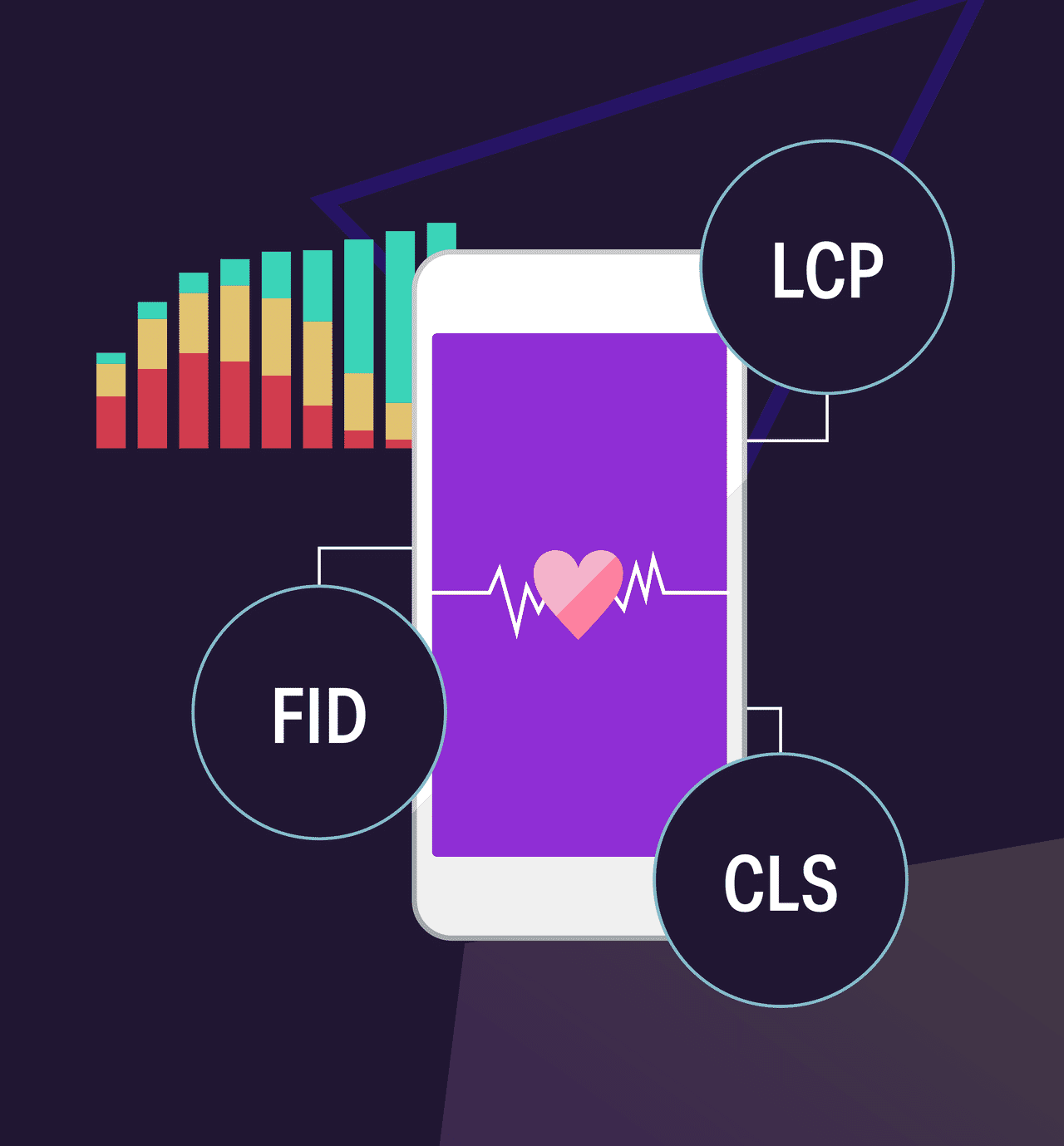Search Engine Optimisation (SEO)
How will Google’s Core Web Vitals (CWV) affect your site’s ranking?
With Google’s new metrics now officially becoming ranking factors, our SEO Agency experts explain why it’s vital (excuse the pun), to get Core Web Vitals smart.

Back in May 2020, we heard the first rumblings of Google’s Core Web Vitals: three new metrics that would either promote or relegate a website’s ranking based on user experience. Since then, as a forward-thinking web design agency, SOZO has helped countless online businesses prep for the moment when Core Web Vitals become an official ranking factor. Now, after many push backs by Google, that day is finally here. Starting June 15th 2021 until end of August 2021, Google will be rolling out the Core Web Vitals update progressively into its search engine ranking algorithm.
Does scoring well on Core Web Vitals make a difference to your website’s ranking? You’d better believe it. Here’s a quick guide to what you stand to gain or lose from Core Web Vitals, and how working with an SEO agency will send your online business in the right direction.
What are Core Web Vitals?
First, let’s recap on those metrics. Google’s Core Web Vitals measure your website’s loading speed (otherwise known as Largest Contentful Paint), its interactivity (First Input Delay) and its visual stability (Cumulative Layout Shift). Taken together, these three metrics give Google a snapshot of the human experience of visiting your site, while from this summer, the search engine will also factor in elements including mobile-friendliness and safety for browsing.
Core Web Vitals aren’t just meaningless stats: they could have a massive impact on your ecommerce sales and website goals, with visitors 24% less likely to navigate away when a site ticks Google’s boxes. As such, when you work with Cheltenham SEO agency SOZO, we’ll make user experience (UX) a priority during the build and ensure that your Core Web Vitals are as good as they can be. After all, what satisfies Google’s spiders also satisfies your customers.
How do most websites score on Core Web Vitals?
In a word: badly. Recent research by Searchmetrics, in which more than two million URLs were crawled, revealed that 96% of websites did not achieve a good score in all three Core Web Vitals, with everything from code bloat to non-optimised pictures blamed for inhibiting UX. Meanwhile, further studies reveal that the average mobile web user only stays focused on their screen for four to eight seconds – and that bounce rate increases by 106% when page load time increases from one to six seconds. It’s not hard to see what ignoring user experience could cost you.
How influential will Core Web Vitals be going forward on search rankings?
It’s a major factor. But remember: with Google still using over 200 ranking factors in its algorithm, CWVs will have a differing impact – from subtle to extreme – on overall ranking for every website. As such, if you’re weighing up one specific high Core Web Vital score, or improvements to design or expansion of content, for example, it’s worth considering which will have the biggest overall impact on your ultimate goal, from sales to form submissions. At SOZO, our SEO experts and web designdevelopment agency expertsteam will help you find the perfect payoff.
What are some of the key issues that contribute to Core Web Vitals scores?
As a general rule, the biggest threats to your overall CWV scores include:
- Excess use of plugins.
- Poorly coded/supported plugins.
- Large or excessive images putting excess strain on load times.
- Not using a content delivery network (e.g. Sirv).
- Lots of styling and functionality files (CSS and JS) which haven’t been minified and consolidated.
But let’s look a little closer at the three CWV categories. In our experience, some of the key causes of poor Cumulative Layout Shift (CLS) scores include:
- Adverts causing any change in layout.
- Cookies banners/notices.
- Images without dimensions.
- Dynamically injected content.
- Embeds and IFrames without dimensions.
- Web fonts causing FOIT/FOUT.
As for First Input Delay (FID), our web design experts recommend avoiding:
- Long tasks (Heavy JavaScript basically).
- Long JavaScript execution time.
- Large JavaScript bundles.
- Render-blocking JavaScript.
And when it comes to Largest Contentful Paint (LCP), all these will hurt your scores:
- Slow server response time.
- Java and CSS that blocks rendering.
- Slow loading resources especially image and video files.
How do I combine great site content with high Core Web Vitals scores?
It’s a balancing act for any online business – how do you trade off the features your site needs to convert visitors with the boxes that need to be ticked for high CWVs scores?
Take a travel company website, for example. A page with no images will load faster than a collage of photos, so would score better on Page Speed if all other factors are equal. In practice, however, that lack of images will make for an uninspiring experience and probably hurt conversion rates. On the flipside, pages with third-party plugins/scripts will hit page speed scores, but potentially drive up sales.
It’s a constant play-off that should be at the heart of your website build – and striking that balance is one of the first things we’ll discuss when you meet with SOZO’s SEO team.
How do I know if my site is performing on Core Web Vitals?
Google provides a Core Web Vitals report in its Search Console, which gives you the key data on your website’s user experience. Here, you’ll find URL performance categorised according to status, metric and URL group, with ratings that span from ‘good’, to ‘needs improvement’ and ‘poor’. Ideally, you’re looking for a load speed of 2.5 seconds or less, a First Input Delay measurement of under 100 seconds and a Cumulative Layout Shift of 0.1 or less. In practice, you might find your Core Web Vitals fall short – and that’s where enlisting the right web design agency can prove invaluable.
What other tools can I use to determine the page speed and performance of my website?
Google’s Search Console is not the only way to measure your metrics and take the pulse of your website’s performance. Try a few different tools and see which one suits you, with popular choices including PageSpeed Insights and Lighthouse. And if you’d rather that SOZO’s SEO agency experts drilled into the data for you, just say the word.
What are the other factors in Google’s Page Experience algorithm update – and when does this take effect?
To give you even more food for thought, the three Core Web Vitals aren’t the only strands of Google’s incoming Page Experience algorithm update, which is rolling out between June 15th and end of August 2021. Any effective web build should factor in the following:
Mobile Friendly
How well does your site perform when navigated by smartphone? As a side note, bear in mind that Google Ads now takes mobile page speed into consideration for Ad Rank.
Safe Browsing
Does your site contain any malicious or deceptive content, from malware to social engineering?
HTTPS
Is the page served over HTTPS, and can visitors trust in the integrity and confidentiality of data transferred between their computer and the site?
No Intrusive Interstitials
Does your site have disruptive banners, popups and overlays that jeopardise user experience?
How do I improve my site’s Core Web Vitals?
So you’ve discovered that your site is misfiring on all three Core Web Vitals and is set to be relegated by Google. Come to SOZO. Offering award-winning web design in Cheltenham and beyond, we create custom websites with a focus on user experience (UX), delivering high-speed page loads and interactive User Interface (UI) design that invites visitors to browse and buy.
As Google’s Core Web Vitals become a reality, trust our team to light a rocket under your search engine ranking.
To supercharge your site’s user experience, talk to Cheltenham’s leading SEO agency. We’re ready to hear from you on 01242 511912 or email info@sozodesign.co.uk
Looking for a digital agency to become your long-term partner to help your business succeed online?
Well say hello then!

